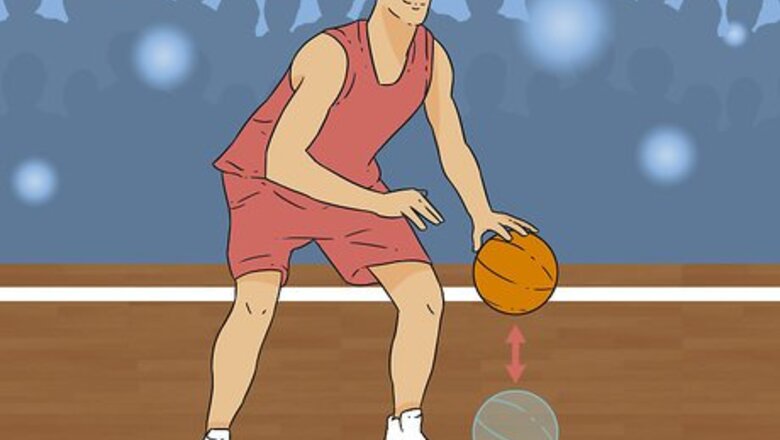
views
Dunking Practice

Dribble toward the basket. Take the allowed two steps while palming the ball in your dunking hand and controlling your approach. Jump from about 1 meter out from the rim. Leap from your plant foot, opposite your shooting hand, extend your arm to the rim, and drive the ball through the net. You can build up to it. If you continue to struggle, jump and grab the rim, and work up to using a ball. Getting the movement right is the hardest part. Dunk one-handed first. The two-handed slam is maybe the most dominating move in basketball, but it takes a lot more leap to touch the rim with two hands.

Use a smaller ball. It's much easier, when you're first starting out, to try dunking with a smaller ball. You'll be able to palm it more easily and control your approach, making the maneuver more satisfying and your practice closer to the real thing. Continue dribbling and shooting exercises with the appropriate-sized ball so you're not getting too used to the "wrong" size, but keep a small ball around for your sick dunks.
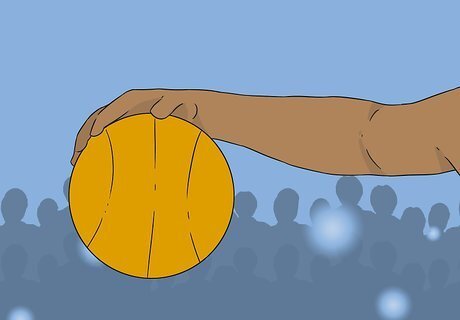
Work on your ball handling. Get a feel for how to use inertia to control the ball when your arm is extended. Even people who can palm a basketball sometimes lose their grip when dunking, so you need to get a feel for maneuvering the ball and controlling it in the air. Practice running at the rim and slamming the ball against it. Even if you're not "dunking," you're still practicing your approach and holding the ball correctly as you leap toward the hoop. You can try a tennis ball or golf ball first, then a volleyball, and work your way up to a basketball.
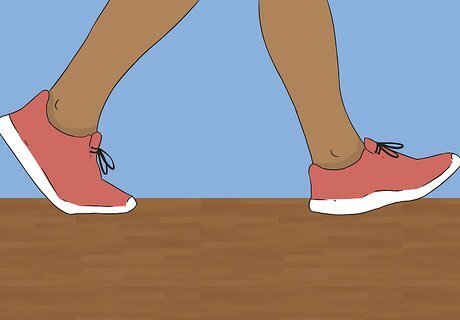
Land correctly. It's common to focus all your energy on getting the rock in the hole and end up falling on your butt, which hurts. A lot. It happens, even to the pros, but spend some time completing the follow-through and focusing on completing the entire sequence of moves, landing safely, and you'll dunk more accurately and more consistently. Visualize the successful dunk and immediately focus on your landing. Try to land on both feet, cushioning your legs and flexing into the landing. Watch out for other players. Don't hang on the rim. In most games, hanging on the rim isn't allowed unless you're in danger of landing on someone below you. Hanging on the rim can damage the hoop and also throw you off balance by pulling your legs out from under you so you fall backwards. So, don't try to grab the rim after you've slammed the ball. Just dunk it and drop.

Practice dunking on a shorter rim. Start with an adjustable height basket, if you have access to one. Lower the height so you can get a feel for dunking, then raise it gradually to the standard height as you improve.

Invest in a good pair of shoes. Most players find that high-quality shoes improve their ability to dunk, and more importantly, prevent you from getting hurt when you try to dunk.

Be persistent. You'll likely embarrass yourself during your first several attempts to dunk, but get up off the floor and try again. You'll be very impressed at your improvement if you keep practicing your leaps and building the strength in your legs.
Building Your Jump

Increase your vertical leap. You will need the lifting power of your legs to get you in the air and up to the basket. Building a regimen of leg workouts that will increase the fast-twitch strength and the flexibility of your leg muscles can help you add inches to your vertical leap, getting you that much closer to the rim. Squatting, high-knees, but kicks and other exercises will help you build up your calf muscles. A good regimen to get started with might include: 50-100 calf raises 2 or 3 sets of squats and lunges 3-5 sets of 60 second wall sits
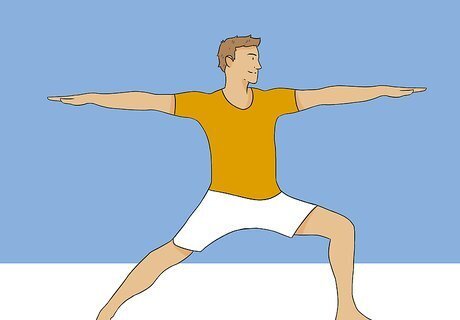
Learn about plyometrics. Plyometrics are exercises that use the resistance of your own body to build strength and are essential for building the kind of strength necessary to build your jump. It takes time to train your body to jump higher, but working the right muscle groups can improve your explosiveness and height without maxing out regularly in the weight room. Muscle groups that need to be stronger: Quadriceps, hamstrings, gluteals, calves. The quadriceps extend the knee, while the hamstrings and gluteals extend the hip. The calves flex the ankle, giving you that initial hop.

Work on your flexibility. Just building strength in your legs won't do it. The muscles also need to be loose and flexible, giving you the movement and response you'll need to dunk over the defense. Develop your flexibility by regularly stretching, doing elastic resistance exercises, and giving yoga a shot. Muscle groups that need flexibility: Hamstrings and hip flexors. Tight hamstrings will impede the knee extension during the jump. Hip flexors resist the hip extension part of the jump.

Start running stairs. Coaches make you run stairs for a reason. Running stairs will develop all the quadriceps, hips, and calves, helping to build all-around leg strength and flexibility. It's also cheap. You can run stairs at your house, at school after-hours, or even on the bleachers outside.
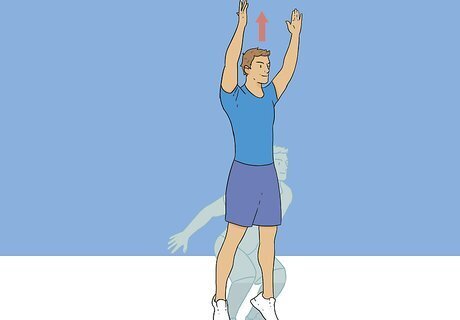
Practice jumping at the court. Jump across the whole court and back. Try three laps or more, leaping as high as you can each time. Jump to touch the net with a running jump until you are able to do it ten times in a row. You probably won't be able to do this all in one day. Keep working at it. Keep jumping. Set your sights on the rim.
Learning Highlight-Reel Dunks

Learn the two-handed slam. Shaquille O'Neal was known for double-handing the ball into the goal so forcefully, the backboard would shatter. While rim technology makes that not particularly possible any more, it's still a powerful and demoralizing dunk to pull off. You need a really high vertical to pull off a two-handed dunk. Practice standing under the rim and jumping straight up until you can touch your wrists to the rim.
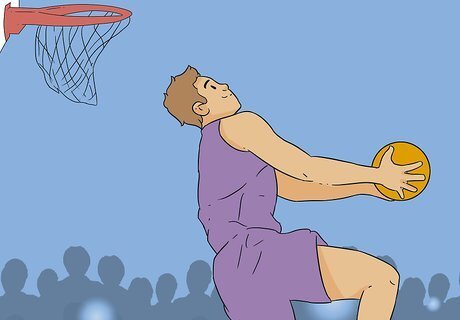
Add some flair with a double-pump. Suggesting you're so high you could dunk it twice, in the double-pump dunk you bring the ball back down to chest level at the apex of your leap, then force it back up to slam it with authority. Some notable players, Tracy McGrady among them, would do this regularly while spinning in the air, doing a 360 dunk variation.
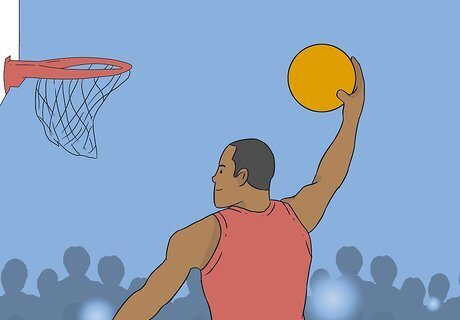
Turn on the windmill. As you approach, bring the ball into your abdomen and back, extending your arm behind your body and up in a circular fashion, like a windmill spinning. At the apex of your jump, bring your arm all the way around to throw it down like a boss. Dominique Wilkins, the Dunkmaster General of the 90s, used to blow crowds away with this spectacular dunk.
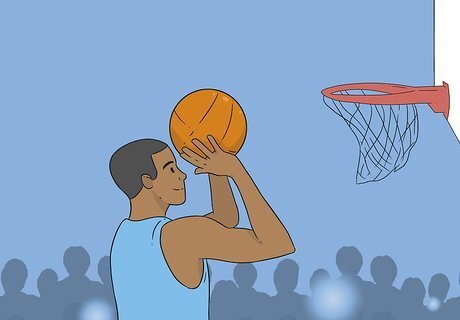
Chop the tomahawk. Either two-handed or one-handed, the tomahawk dunk involves bringing the ball back over your head by bending your elbows and slamming it forcefully into the hoop, as if you were chopping a tomahawk. "Dr. J" Julius Erving popularized this poster dunk, as well as Darryl Dawkins, who broke several backboards tomahawk dunking.
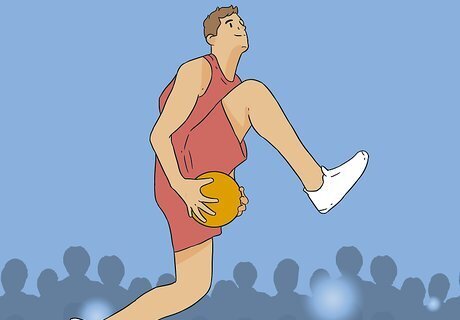
Go between the legs. While he wasn't the first player to complete it, Vince Carter wowed crowds at the 2000 NBA dunk contest by passing the ball under one leg while in the air and slamming it with authority. It didn't hurt that his forehead was almost touching the rim. If you've worked your ups to that height, try passing it under one leg and dunking it.













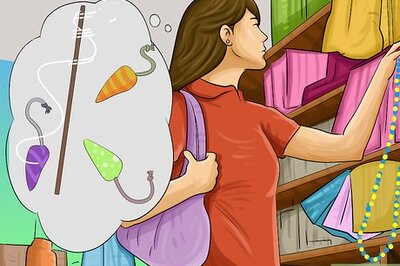


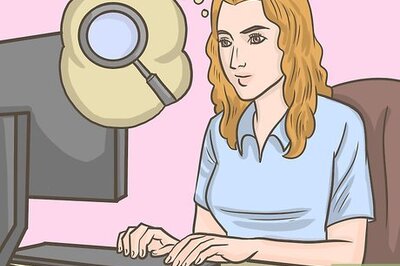

Comments
0 comment